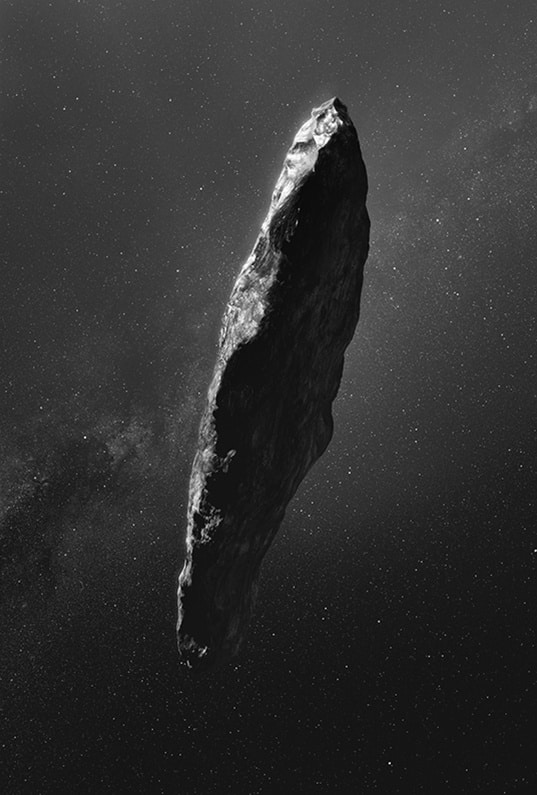OUMUAMUA
- copyright — @ Nicolai Howalt
- year — 2023
- edition — 5+2
- size — 24 3/5 × 19 7/10 × 4/5 in | 62.5 × 50 × 2 cm
- material — Silver gelatine print
ʻOumuamua is the first interstellar object recorded to pass through the Solar System. It was discovered by Robert Weryk using the Pan-STARRS telescope at Haleakalā Observatory, Hawaii, on October 19, 2017.
When first observed, it was about 33 million km (21 million mi; 0.22 AU) from Earth (about 85 times as far away as the Moon) and already moving away from the Sun.The name comes from the Hawaiian ʻoumuamua ‘scout’ and reflects the way the object is like a scout or messenger sent from the distant past to reach humanity. Before the official name was decided, Rama was suggested, the name given to an alien discovered under similar circumstances in the 1973 science fiction novel Rendezvous with Rama by Arthur C. Clarke.
ʻOumuamua is a small object estimated to be between 100 and 1,000 meters long, with its width and thickness both estimated to be between 35 and 167 meters.
It has a red color, similar to objects in the outer Solar System. Despite its close approach to the Sun, it showed no signs of a coma. ʻOumuamua would be notable for its extrasolar origin, high inclination, and observed acceleration without apparent coma. By July 2019, most astronomers concluded that it was a natural object, but its exact characterization is disputed given the limited observation window. While an unconsolidated object would require ʻOumuamua to have a density similar to rocky asteroids, a small internal strength similar to icy comets would allow it to have a relatively low density. Proposed explanations for its origin include the remnant of a disintegrated rogue comet or a piece of a nitrogen-ice-rich exoplanet similar to Pluto. On March 22, 2023, astronomers proposed that the observed acceleration was “due to the release of trapped molecular hydrogen formed through the energetic processing of an H2O-rich icy body”, consistent with ‘Oumuamua being an interstellar comet, “originating as a planetesimal relic largely similar to Solar System comets.”
A number of astronomers have suggested that it could be the product of extraterrestrial technology; however, there is insufficient evidence to support any hypotheses, “despite all its strangeness”. In January 2022, scientists proposed Project Lyra, in which a spacecraft launched from Earth could reach ‘Oumuamua in 26 years for closer study.
As the first known object of its type, ʻOumuamua presented a unique case to the International Astronomical Union, which assigns names to astronomical objects.






